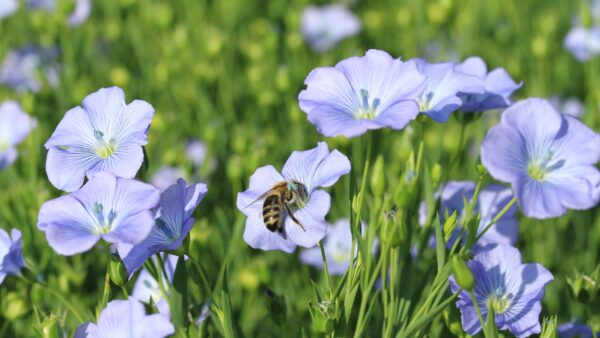Plant breeders have an exciting new tool at their disposal called gene editing. It’s not new anymore, having been around at least five years. It’s really just a suite of technologies that allows us to modify a gene in a desired fashion. We hear about it now on morning shows, as the public becomes more aware of it and tools like CRISPR/Cas9 become more mainstream._x000D_
_x000D_
The public seems relatively comfortable with new gene editing tools being used on plants. It doesn’t carry the stigma that the acronym “GM” carries with it. Although CRISPR/Cas9 is a natural system for bacteria to fend off viruses, which can sound scary, on a plant side it simply takes advantage of DNA repair mechanisms._x000D_
_x000D_
The difference between gene editing and GM is gene editing is a very targeted modification. We’re tweaking a specific gene, not inserting a new one. In people’s minds, it’s not as scary a technology as GM, as nature modifies genes all the time. What we get from gene editing is the same result you would get from classical plant breeding._x000D_
_x000D_
We can improve traits in a highly efficient manner now. This is crucial in plant breeding, where you don’t have the genetic variation found in nature. Canadian scientists have painstakingly created wheat germplasm to try and find disease-resistant genes for stem and leaf rusts, endemic in Western Canada. We may now be able to use gene editing to create broad genetic resistance in wheat to protect against a range of diseases. After proof of concept in lettuce for downy mildew, this is exactly what a team of researchers at the University of California, Davis, is working on._x000D_
_x000D_
Gene editing technology is a game changer, and one of the most important technologies for breeders. A public scientist in general will not release a standard GM product due to the cost of regulation, liability and trade barriers. CRISPR is a huge opportunity for everyone._x000D_
_x000D_
Still, activist groups have a loud voice, especially on social media, and it’s easy to scare people without data. Scientists are limited to data, but so many of these advocacy groups are not. They can say whatever they like._x000D_
_x000D_
Reports from the National Academy of Sciences have again proven that DNA technology is perfectly safe. Plant breeding itself is a filter that ensures safety. Anything that goes through the plant breeding process — whether it’s GM, gene editing, crosses from wild species, you name it — goes through many trials across locations and years before being released._x000D_
_x000D_
This ensures it grows well and has the adaptability, disease resistances, yield and quality farmers want, and the qualities prized by processors and consumers. People choose with their wallets. Seed companies and public scientists and breeders know if you put a variety out that won’t grow well, you won’t be in business too long._x000D_
_x000D_
Focus on Values_x000D_
_x000D_
Still, this message is not getting out to the public. I grew up on a small farm in Manitoba. I’ve been in agriculture since I was born. I used to think the key to solving this problem was about education. That’s part of it, but it’s really a matter of making it personal — just like activist groups do so well._x000D_
_x000D_
Scientists need to ask people what matters to them. Is it fewer pesticides? More nutritious food? Affordable food? Find out what they care about, and explain how plant breeding contributes to that, as it has for generations. Showing them studies and trying to explain the technology alone is not enough._x000D_
_x000D_
Influencing the public will, of course, influence regulators. Canada has a huge advantage over other nations in that it truly doesn’t regulate the breeding process, but rather the product itself. We have a truly logical process, but there are many forces at work trying to change this. For trade to work best, we need a harmonious regulatory system._x000D_
_x000D_
If everyone would adopt and objectively implement the Canadian system, there would be a lot more great things happening in plant breeding as far as products coming out, and everyone could use the tools to help create them._x000D_
_x000D_













